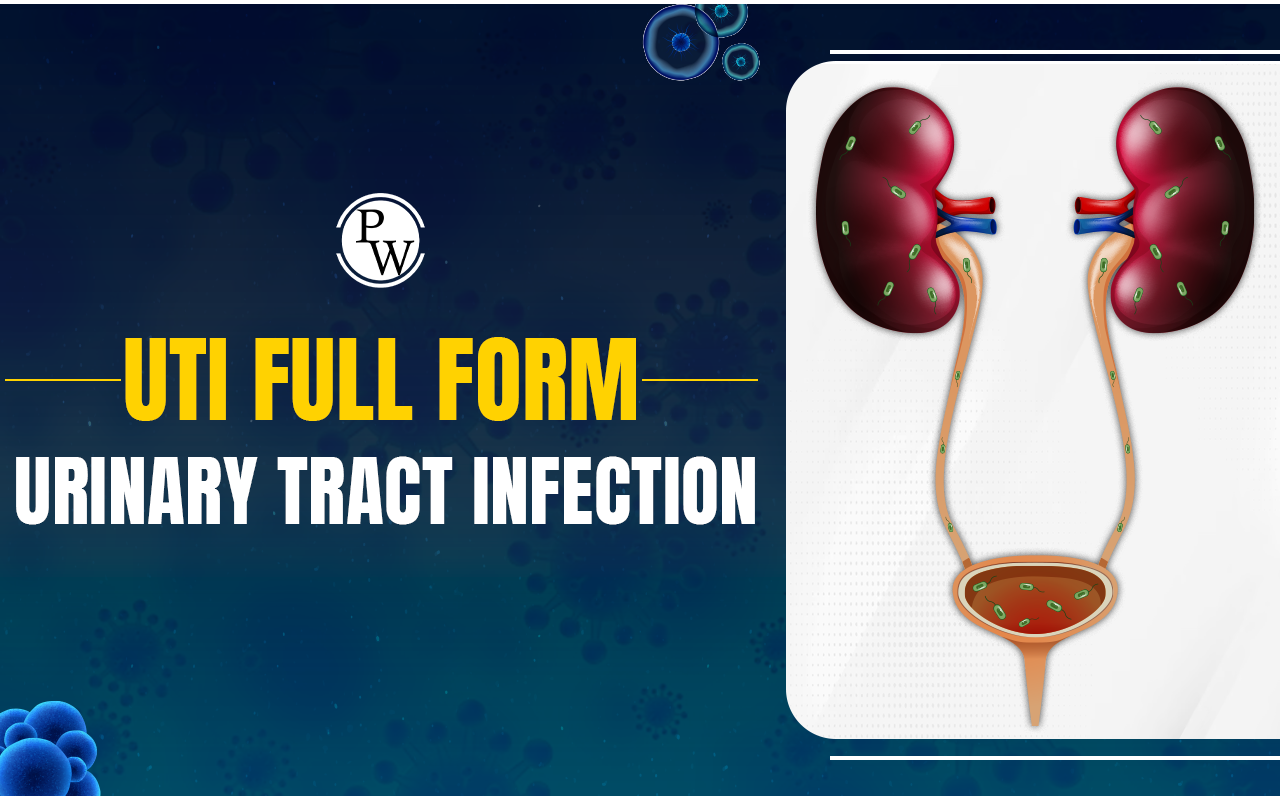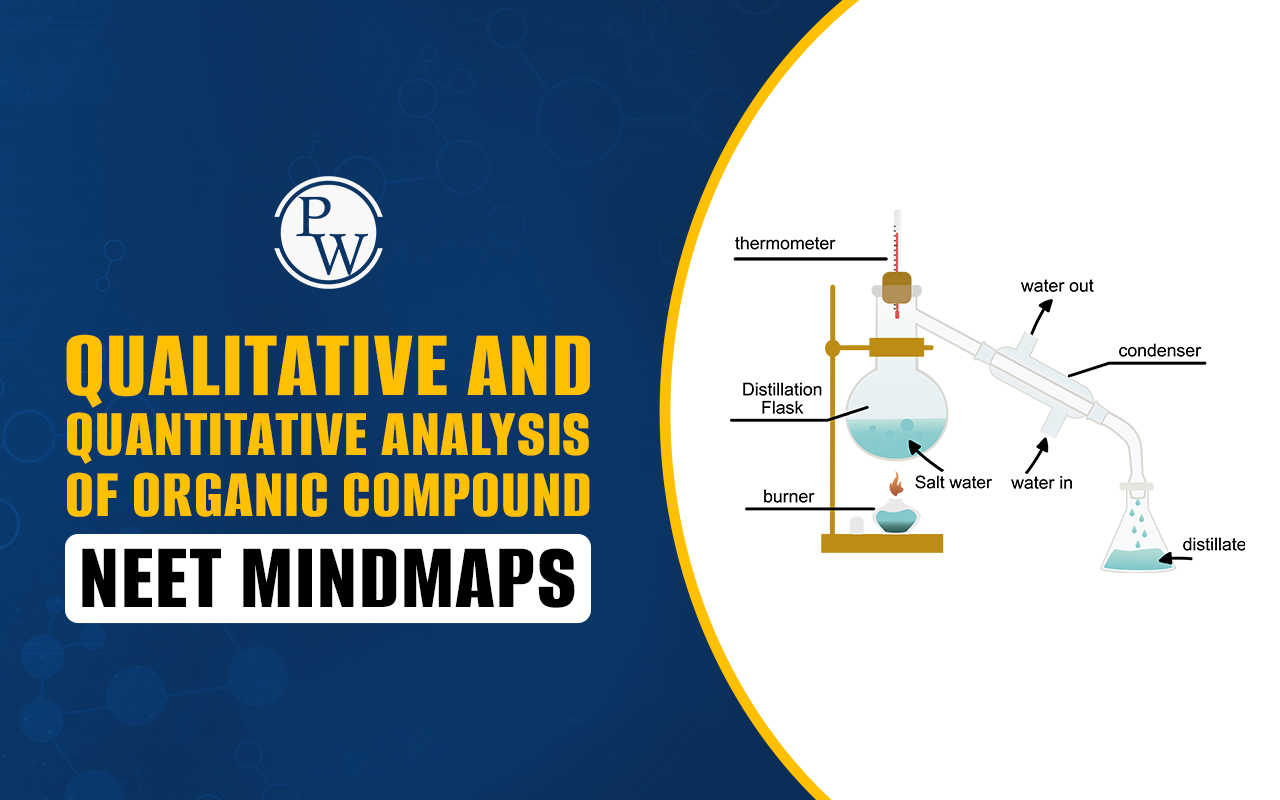

UTI Full Form: A urinary tract infection (UTI) is an illness that can occur in any component of the urinary system, including the kidneys, bladder, and urethra. Bacteria primarily cause UTIs and are more common in women than in men. A UTI is characterised by pain or a burning sensation during urination, frequent desires to urinate, and a persistent need to urinate despite recently emptying the bladder. UTIs, thankfully, can be effectively treated with medications.
What is UTI Full Form?
A urinary tract infection (UTI) is characterized by an infection occurring in any part of the urinary system, which includes the kidneys, ureters, bladder, and urethra. Typically, UTIs primarily affect the lower urinary tract, namely the bladder and urethra. Regarding susceptibility, women have a higher risk of developing UTIs than men. While a bladder infection can cause discomfort and inconvenience, it can lead to serious health complications if it spreads to the kidneys. Healthcare providers commonly treat UTIs with antibiotics. Additionally, there are preventive measures one can take to reduce the likelihood of experiencing a UTI.UTI Full Form in English
UTI is Urinary Tract Infection, an infection caused by microbes that can affect any part of the urinary system. The urinary tract is divided into two sections: upper and lower. In the case of infection in the lower urinary tract, it is referred to as a bladder infection. In contrast, an infection in the upper urinary tract is known as a kidney infection.
UTI Full Form in Hindi
UTI Full Form in Hindi यूटीआई यानी मूत्रमार्ग संक्रमण, जो कि कीटाणुओं द्वारा होने वाला एक संक्रमण होता है, जो मूत्र प्रणाली के किसी भी हिस्से को प्रभावित कर सकता है। मूत्र प्रणाली ऊपरी मूत्र प्रणाली और निचली मूत्र प्रणाली में विभाजित होती है। निचली मूत्र प्रणाली में संक्रमण होने पर इसे मूत्राशय संक्रमण कहा जाता है, जबकि ऊपरी मूत्र प्रणाली में संक्रमण होने पर इसे गुर्दे का संक्रमण कहा जाता है।
UTI Full Form in Medical
The UTI Full Form in Medical is Urinary Tract Infection, one of the most common bacterial infections. A Urinary Tract Infection (UTI) is a bacterial infection that can affect various parts of the urinary tract, such as the ureters, kidneys, bladder The urinary tract is divided into two main components:
- Upper urinary tract, including the kidneys and ureters.
- Lower urinary tract: This includes the bladder and urethra.
UTIs can be classified based on their clinical presentation into two categories:
- Complicated UTIs occur when factors compromise the normal functioning of the urinary tract, and they exhibit features associated with complicated infections.
- Uncomplicated UTIs (urinary tract infections) occur in otherwise healthy people who have no neurological or structural abnormalities in the urinary tract.
| October Month’s Medical Days | |
| World Heart Day | Breast Cancer Awareness Month |
| World Mental Health Day | World Arthritis Day |
| Global Handwashing Day | World Food Day |
Causes of UTIs
The following are the causes of UTIs, which can cause complicated UTIs:
- The bacteria Escherichia coli, which is common in the digestive tract, is the primary cause of UTIs.
- Other bacteria and fungi can also cause UTIs.
- UTIs can occur after sexual intercourse if proper hygiene is not maintained or if either partner already has a urinary infection.
- Urinary Tract Infections are not considered sexually transmitted diseases.
- A suppressed immune system due to conditions like diabetes can increase the risk of UTIs.
- Abnormalities in the urinary tract can make individuals more prone to UTIs.
- The use of unsterile catheters can introduce bacteria and lead to UTIs.
- Blockages in the urinary tract can hinder the proper flow of urine, resulting in urine accumulation in the bladder and increasing the chances of UTIs.
Causative Microorganisms of UTIs
The UTIs can be caused by a variety of microorganisms, including gram-negative and gram-positive bacteria. Escherichia coli is the most common causative agent, accounting for approximately 80-90% of cases. E. coli can cause both simple and complicated urinary tract infections (UTIs). Other pathogens that contribute to disease, are listed in decreasing order of prevalence:
| Causative Microorganisms of UTIs | ||
| Microorganism | Cause Uncomplicated UTIs | Cause Complicated UTIs |
| Escherichia coli | Yes | Yes |
| Klebsiella pneumoniae | Yes | Yes |
| Enterococcus faecalis | Yes | Yes |
| Staphylococcus saprophyticus | Yes | - |
| Candida | Yes | Yes |
| Streptococcus (group B) | Yes | - |
| Enterococcus | - | Yes |
| Staphylococcus aureus | - | Yes |
| Pseudomonas aeruginosa | - | Yes |
| Proteus mirabilis | - | Yes |
Symptoms of UTIs
The symptoms of a urinary tract infection (UTI) vary from person to person, but there are some common warning signs to look out for. You should know the following symptoms if you suspect a urinary tract infection. Seeking medical help is critical for accurate diagnosis and treatment.
- Frequent and painful urination.
- A persistent urge to urinate, even when the bladder is empty.
- Fever with chills.
- Lower abdominal pain.
- Change in urine color, appearing yellow or cloudy.
- The presence of blood in the urine, indicates a severe infection.
Types of UTIs
Different types of urinary tract infections (UTIs) can cause specific symptoms depending on the affected part of the urinary tract. Here are the signs and symptoms associated with each:
|
Types of UTIs |
|
|
Part of the Urinary Tract Affected |
Signs and Symptoms |
|
Kidneys |
|
|
Bladder |
|
|
Urethra |
|
Guidelines to Prevent UTIs
To minimise the risk of urinary tract infections (UTIs), it is important to follow these preventive guidelines:
- Perineal hygiene: Maintaining good perineal hygiene prevents UTIs. Clean the vulva daily and ensure that wiping is done from front to back, away from the rectum. This practice helps prevent the colonization and spreading of bacteria that can cause UTIs.
- Prophylactic measures after intercourse: Urinating shortly after sexual intercourse helps flush out any potential bacteria and promotes cleanliness, reducing the risk of UTIs.
- Catheterization precautions: If catheterization is necessary, take extra precautions to prevent UTIs:
- Use catheters only when medically required.
- Follow proper aseptic techniques during catheter insertion and care.
- Maintain a high fluid intake to promote urine flow and minimize the risk of UTIs associated with catheter use.
- Adequate fluid intake: Stay well-hydrated by drinking plenty of water throughout the day. This helps maintain regular urination, flushing bacteria out of the urinary tract and reducing the likelihood of UTIs.
Diagnosis of UTIs
It is essential to consult a healthcare professional for an accurate diagnosis. Quick diagnosis and appropriate treatment help manage UTIs effectively and prevent potential complications. UTIs are typically diagnosed using the following methods and considerations:
- Patient's Symptoms: A healthcare professional will evaluate the patient's reported symptoms, such as frequent urination, pain or burning during urination, cloudy or strong-smelling urine, and abdominal pain. These symptoms are early warning signs of a UTI.
- Medical History: The healthcare provider will review the patient's medical history, including any previous UTIs, underlying medical conditions, recent antibiotic use, and relevant lifestyle factors. This information helps assess the risk factors and potential causes of the UTI.
- Physical Examination: A physical examination may assess specific signs of a UTI, such as tenderness or pain in the lower abdomen or back.
- Urine Sample Analysis: Urine sample analysis is the primary diagnostic test for UTIs. The patient will be asked to provide a "clean catch," or midstream urine sample collected in a sterile container. This sample is then tested for bacteria, red blood cells, white blood cells, and other signs of infection. A dipstick test, microscopic examination, culture, and sensitivity testing may be performed as part of the analysis.
- Culture and Sensitivity Testing: A culture and sensitivity test may be performed if significant bacterial growth is observed in the urine sample. This test identifies the specific bacteria causing the UTI and determines the most effective antibiotic treatment by evaluating the bacteria's susceptibility to various antibiotics.
- Additional Tests: In some cases, additional diagnostic tests may be necessary to assess the urinary tract's structure and function. These tests include ultrasound, computed tomography (CT) scan, cystoscopy, and urodynamic studies. These tests are generally performed when there are recurrent or complicated UTIs or when underlying urinary tract abnormalities are suspected.
UTIs Treatment Methods
Remember to consult a healthcare professional for proper diagnosis, treatment, and personalized guidance on preventing and managing UTIs. Treating UTIs involves the following methods:
- Reinfection prevention: After successfully treating a UTI, identify and address any underlying factors that may contribute to recurrent infections. This may entail treating underlying medical conditions or changing one's lifestyle to reduce the risk of future UTIs.
- Appropriate antibiotic therapy: Antibiotics are commonly used to treat urinary tract infections (UTIs). The type and severity of the UTI, as well as the sensitivity of the causative bacteria, determine the antibiotic used. It is critical to complete the entire course of antibiotics a healthcare professional prescribes to ensure effective treatment and reduce the risk of antibiotic resistance.
- General measures:
- Adequate rest: Get sufficient rest to support the body's immune system in fighting the infection.
- Proper Hydration: Hydration is essential for maintaining urine production and flushing bacteria from the urinary tract.
- Good personal hygiene: Practice regular handwashing and maintain cleanliness to minimize the spread of bacteria and reduce the risk of UTIs.
Check NEET Exam Important Links
| NEET Exam Important Links | |
| NEET Syllabus | NEET Sample Paper |
| NEET Notes | NEET Previous Year Question papers |
UTI Full Form FAQs
Is UTI a serious disease?
Is UTI normal for men?
Do condoms prevent UTI?
Can vaginal dryness cause UTI?












